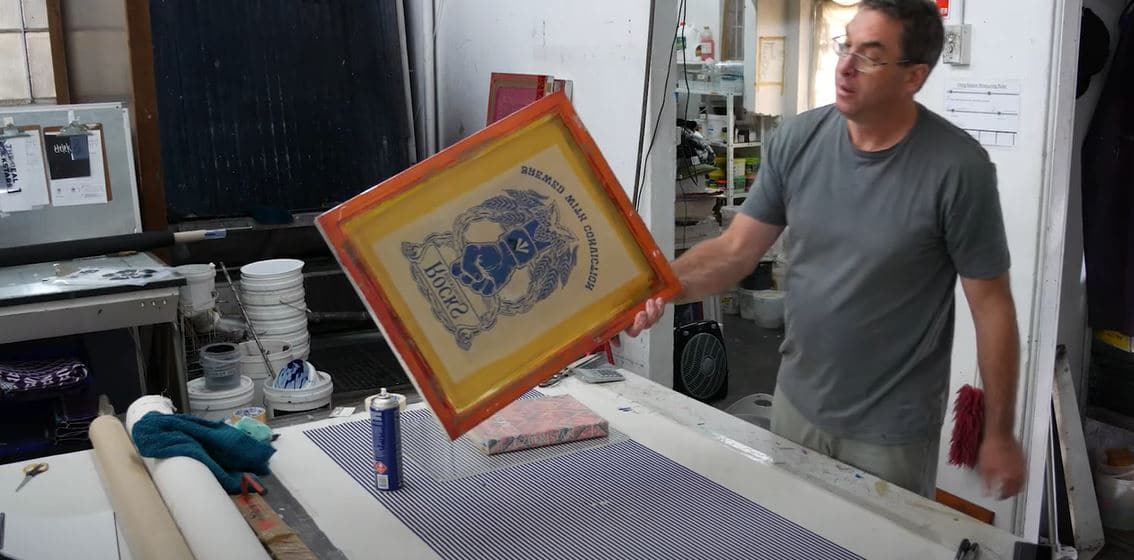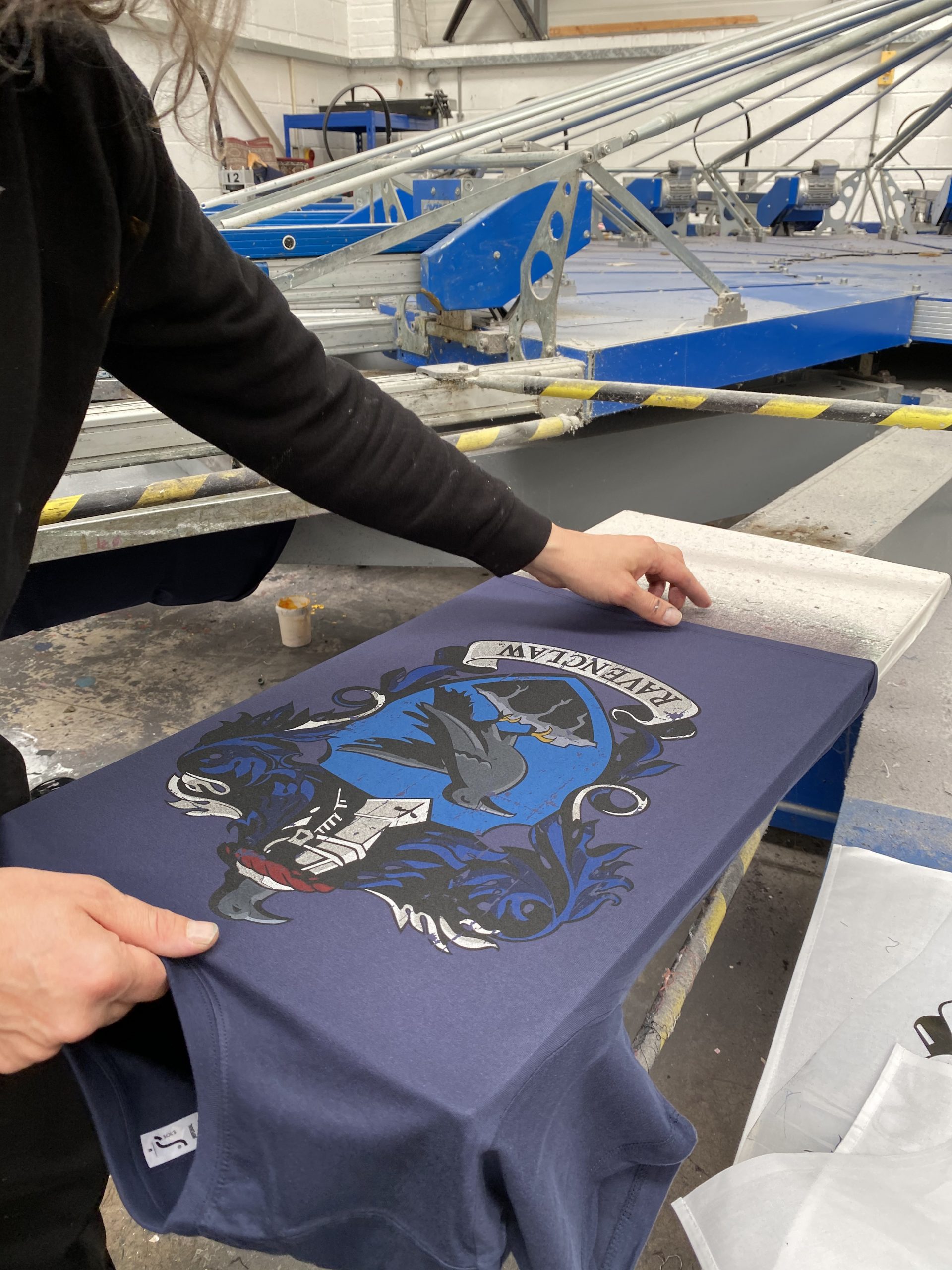The Vital Overview to Understanding Screen Printing and Its Versatile Uses
Screen printing has an abundant background that goes back to old times, developing into a sophisticated technique made use of throughout numerous industries today. This guide explores the intricacies of the screen printing procedure, describing its applications in fashion, advertising and marketing, and home style - 10:9 Design LLC Company. Comprehending these basics can open up creative possibility for both artistic and commercial jobs. The adhering to areas will disclose necessary suggestions and techniques to enhance one's screen printing ventures
The History of Screen Printing
Screen printing has origins that trace back centuries, its advancement mirrors the creative and technological advancements of numerous cultures. Coming from old China, the technique was at first made use of for embellishing fabrics and later spread to Japan, where it came to be indispensable to Ukiyo-e woodblock printing. The technique changed to Europe in the 18th century, where it got appeal amongst craftsmens and business printers. The innovation of picture solution in the 20th century transformed screen printing, enabling more elaborate styles and higher efficiency. Musicians like Andy Warhol further moved its popularity, making use of the tool to develop iconic jobs that combined commercialism and fine art. By the late 20th century, screen printing had actually established itself as a flexible technique, utilized in vogue, marketing, and art. Today, it continues to develop, incorporating electronic modern technology and broadening its applications throughout different markets.
The Screen Printing Refine Explained
Screen printing transforms artistic visions right into tangible designs with a collection of specific actions. At first, a picture is created and afterwards transferred onto a screen, typically made from fine mesh fabric extended over a structure. A light-sensitive solution is related to the screen, which is subjected to light, setting in locations not covered by the image. After rinsing the unhardened emulsion, a pattern is created.
Next off, the screen is positioned over the substrate, whether it be material, paper, or another material. Ink is then pressed through the open locations of the pattern using a squeegee, depositing the style onto the substrate below. This procedure can be repeated for numerous colors, needing separate screens for each and every color. The printed product is cured utilizing heat to ensure the ink adheres properly, resulting in a durable, dynamic design all set for usage.
Sorts Of Screen Printing Techniques

Additionally, specialty strategies, such as discharge screen printing, get rid of color from the material to develop softer prints, while foil screen printing uses metallic foil to accomplish a glossy surface (10:9 Design contact). Each strategy supplies distinctive features, dealing with different creative needs and production scales, ultimately expanding the opportunities within the screen printing domain name
Applications of Screen Printing in Different Industries

Additionally, the signs and advertising and marketing industries utilize screen printing for creating captivating screens and banners. This technique enables vibrant colors and detailed layouts that record attention. In electronic devices, screen printing is used for using conductive inks to motherboard, necessary for element connections. The home design sector accepts screen printing to generate unique styles on fabrics and wall art. Generally, screen printing offers as an important device throughout diverse areas, improving items with individualized and aesthetically enticing graphics.
Tips for Effective Screen Printing Projects
While taking on a screen printing project, careful focus to detail can substantially enhance the last result. Picking top notch products is necessary; this consists of the screen, inks, and substratums. Using ideal mesh matters can affect ink deposition and detail resolution. Prep work is equally crucial; detailed cleansing of screens and proper direct exposure times ensure crisp prints.
Next off, precise enrollment is important for multi-color prints. Using positioning tools can help accomplish specific layering. In addition, screening prints on scrap products before production aids recognize prospective concerns without losing resources.

Frequently Asked Inquiries
What Products Are Best for Screen Printing on Material?
Cotton and polyester blends are perfect for screen printing on material because of their resilience and ink absorption. Additionally, specialized materials like silk or canvas can create unique textures and surfaces, boosting the general layout quality.
How Do I Tidy and Maintain Screen Printing Devices?
To clean and keep screen printing tools, one should on a regular basis wash screens with appropriate solvents, check squeegees for wear, lube moving parts, and store all items in a completely dry, dust-free setting to extend their life expectancy.
What Are the Environmental Influences of Screen Printing?
Screen printing can have considerable environmental influences, consisting of chemical waste from inks and solvents, water usage during cleansing procedures, and energy intake. Lasting techniques and environment-friendly products are important for reducing these adverse impacts.
Can Screen Printing Be Done in your home Efficiently?
Screen printing can be properly done at home with the appropriate products and techniques. Enthusiasts can develop high quality prints, though success depends upon their ability level, equipment, and understanding of the process entailed.
What Are the Costs Related To Starting a Screen Printing Company?

Beginning a screen printing company entails expenses for tools, products, and work space. Preliminary costs commonly range from a couple of hundred to a number of thousand bucks, depending website on the scale, top quality of machinery, and wanted production capacity.
Screen printing has an abundant history that dates back to old times, evolving into an innovative method used across various sectors today. One more method, rotating screen printing, utilizes round screens, assisting in constant printing on fabric rolls, therefore enhancing effectiveness for massive productions. Furthermore, specialty techniques, such as discharge screen printing, get rid of dye from the textile to produce softer prints, while foil screen printing applies metal aluminum foil to accomplish a glossy surface. In the style field, screen printing is commonly made use of to develop vivid layouts on apparel, making it possible for brands to display their special designs. Cotton and polyester blends are suitable for screen printing on material due to their durability and ink absorption.